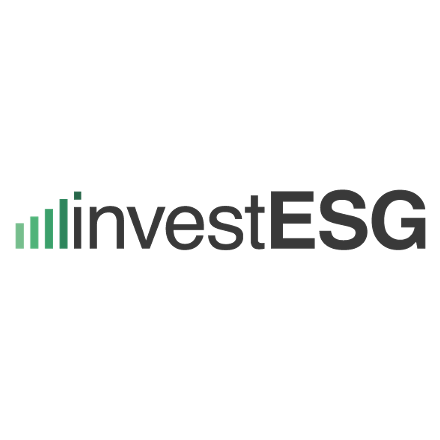The type of investment vehicle will depend on the type of assets targeted (e.g., early stage technology with venture capital, or waste management infrastructure with institutional or development capital). The amount of capital required will depend on the strategy. Vehicles can combine blended/concessional capital (by development agencies, donors, climate funds, or philanthropy) to mitigate investor risk or to develop pipelines through project preparation facilities and technical assistance grants.
A thorough review of credit profile, new technologies, and commercial market potential would help demonstrate the attractiveness of the solutions proposed under the System Change Scenario compared with traditional products and infrastructure.
Incorporating “plastic risk” in financial and environmental, social, and governance (ESG) assessments
As we shown in Breaking the Plastic Waste, the valuation of current plastic assets does not account for the fact that the expected industry growth is not aligned with the clean ocean agenda, commitment to a 1.5
o C world, emerging societal and consumer trends, or changing government policies—all of which may have significant implications for financial performance. It is time for analysts and investors to account for these sector-specific developments—or “plastic risks”—in their company valuations. Investment banks, sustainability indices, and credit/ESG rating agencies could all play a role here. For example, there are already examples of credit ratings being punitive towards plastic packaging companies on the basis of increasing demand for recycled over virgin material and possible clean-up costs. A longer-term and more holistic approach to risk and impact trade-offs could be used, ensuring that plastic risk is not replaced by other risks, such as emissions and land use change.
| SYSTEMIQ and the Pew Charitable Trusts released the report 'Breaking the Plastic Wave: A Comprehensive Assessment of Pathways Towards Stopping Ocean Plastic Pollution' recently. Could you please elaborate on its key findings and the current trends?The flow of plastic into the ocean is projected to nearly triple by 2040. Without considerable action to address plastic pollution, 50 kilograms (kg) of plastic will enter the ocean for every metre of shoreline. Our analysis shows that a future with approximately 80 per cent (82 ±13 per cent ) less annual plastic leakage into the ocean relative to business as usual is achievable by 2040 using existing technologies. This pathway provides benefits to communities, to governments, and even to industry. However, it depends on the immediate, ambitious, and concerted global implementation of solutions across the entire plastics value chain. This vision for system change represents an attractive and viable way forward.

Ten critical findings emerge from our analysis, as summarized below:
,
equivalent to 50 kg of plastic for every metre of coastline worldwide. This trend will have serious consequences for communities, ecosystems, and businesses.
Governments and industry leaders are stepping up with new policies and voluntary initiatives, but these are often narrow in focus or concentrated in low-leakage countries. By 2040, current government and industry commitments are likely to reduce annual plastic leakage to the ocean by only 7 per cent relative to BAU.
There is no single solution to end ocean plastic pollution. Upstream and downstream solutions should be deployed together. On their own, no “single-solution” strategy reduces annual leakage of plastic to the ocean even below 2016 levels by 2040, let alone near-zero leakage.
Industry and governments have the solutions today to reduce rates of annual land-based plastic leakage to the ocean by about 80 per cent below projected BAU levels by 2040, while delivering on other societal, economic, and environmental objectives. We estimate this is possible by reducing 30% of plastic demand under BAU, substituting 17%, and significantly scaling up recycling.
Tackling the remaining 5 million tons per year of plastic leakage demands significant innovation across the entire plastics value chain. Achieving the vision of near-zero ocean plastic pollution will require technological advances, new business models, significant spending, and, most crucially, accelerating upstream innovation.
The System Change Scenario is economically viable for governments and consumers, but a major redirection of capital investment is required. The present value of global investments in the plastic industry between 2021 and 2040 can be reduced from US$2.5 trillion to US$1.2 trillion, but the System Change Scenario will require a substantial shift of investment away from the production and conversion of virgin plastic, which are mature technologies perceived as “safe” investments, to the production of new delivery models, plastic substitutes, recycling facilities, and collection infrastructure, some of which are less mature technologies and perceived as riskier.
Reducing approximately 80 per cent of plastic leakage to the ocean will bring to life a new circular plastics economy with major opportunities—and risks—for industry. Today, plastic pollution presents a unique risk for producers and users of virgin plastics given regulatory changes and growing consumer outrage. But it is also a unique opportunity for companies ahead of the curve, ready to unlock value from a circular economy that derives revenue from the circulation of materials rather than the extraction and conversion of fossil fuels. Large new value pools can be created around better design, better materials, better delivery models, improved sorting and recycling technologies, and smart collection and supply chain management systems. Under the System Change Scenario, we could fulfil the growing global demand for “plastic utility” in 2040 with roughly the same amount of plastic in the system as today, and 11% lower levels of virgin plastic production. This scenario essentially decouples plastic growth from economic growth.
A system change would require different implementation priorities in different geographies and for different plastic categories. Flexible packaging (bags, films, pouches, etc.) and multilayer and multimaterial plastics (sachets, diapers, beverage cartons, etc.) account for a disproportionate share of plastic pollution compared with their production.
Addressing plastic leakage to the ocean under the System Change Scenario has many co-benefits for climate, health, jobs, working conditions, and the environment, thus contributing to many of the United Nations Sustainable Development Goals. The scenario results in 25 per cent (±11 per cent) lower plastic-related greenhouse gas (GHG) emissions in 2040, although still an increase relative to today. Peak virgin plastic production is reached by 2027. In addition, net direct employment in the plastics value chain increases by 700,000 jobs, almost all of them in the Global South.
The time is now: If we want to significantly reduce plastic leakage, we have the solutions at our fingertips.
An implementation delay of five years would result in an additional ~80 million tons of plastic going into the ocean by 2040. In the System Change Scenario, paper, coated paper, and compostable materials can substitute 17% of plastic waste generated by 2040, equivalent to 71 million tons of plastic, without fundamentally decreasing the performance, affordability, or social and environmental acceptability of packaging and single-use items. 95% of this potential substitution comes from six key product applications for which known material alternatives already exist at some level of scale: monomaterial films; other rigid monomaterial packaging; sachets and multilayer films; carrier bags; pots, tubs, and trays; and food service disposables. All substitutions need careful management at end of life and have varied environmental impacts. They create opportunities, risks, and trade-offs that must be carefully managed and assessed on a case-by-case basis. The Substitute system intervention has 1.7-2 times higher production costs than virgin plastic per ton of plastic utility, so substitutes were selected only when they replace plastic that cannot be reduced or mechanically recycled. The intervention plays an important role in minimizing ocean plastic pollution and could help reduce overall GHG emissions. brief bio Yoni Shiran is the lead author and Program Director of Breaking the Plastic Wave, a comprehensive assessment of pathways towards stopping ocean plastic pollution. Yoni leads the Plastic platform at SYSTEMIQ where they work with governments, industry and investors to enable system change at a global and national scale. Before SYSTEMIQ, Yoni spent 6 years at McKinsey working on a variety of circular economy projects. Yoni holds an MBA from UC Berkeley. about

 Can plastic waste be seen as an investment opportunity? Reducing approximately 80 per cent of plastic leakage to the ocean will bring to life a new circular plastics economy with major opportunities—and risks—for industry. Today, plastic pollution presents a unique risk for producers and users of virgin plastics given regulatory changes and growing consumer outrage. But it is also a unique opportunity for companies ahead of the curve, ready to unlock value from a circular economy that derives revenue from the circulation of materials rather than the extraction and conversion of fossil fuels. Large new value pools can be created around better design, better materials, better delivery models, improved sorting and recycling technologies, and smart collection and supply chain management systems. Under the System Change Scenario, we could fulfil the growing global demand for “plastic utility” in 2040 with roughly the same amount of plastic in the system as today, and 11% lower levels of virgin plastic production. This scenario essentially decouples plastic growth from economic growth.
Can plastic waste be seen as an investment opportunity? Reducing approximately 80 per cent of plastic leakage to the ocean will bring to life a new circular plastics economy with major opportunities—and risks—for industry. Today, plastic pollution presents a unique risk for producers and users of virgin plastics given regulatory changes and growing consumer outrage. But it is also a unique opportunity for companies ahead of the curve, ready to unlock value from a circular economy that derives revenue from the circulation of materials rather than the extraction and conversion of fossil fuels. Large new value pools can be created around better design, better materials, better delivery models, improved sorting and recycling technologies, and smart collection and supply chain management systems. Under the System Change Scenario, we could fulfil the growing global demand for “plastic utility” in 2040 with roughly the same amount of plastic in the system as today, and 11% lower levels of virgin plastic production. This scenario essentially decouples plastic growth from economic growth. investESG
investESG


